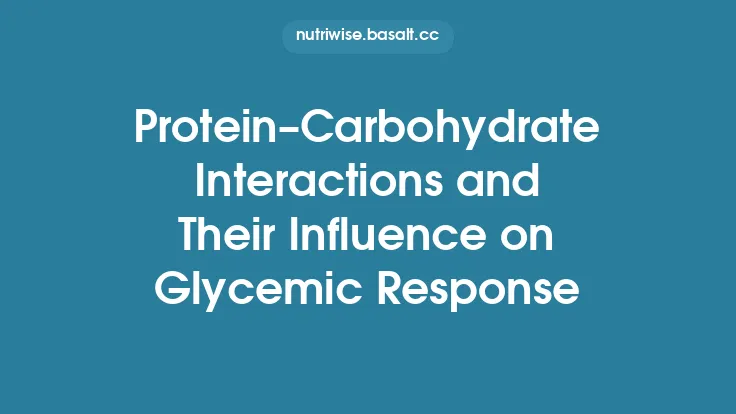Magnesium is an essential mineral that plays a subtle yet pivotal role in the overall health and efficiency of skeletal muscle. While the biochemical pathways of contraction, recovery, and fatigue are often highlighted, the foundation of optimal muscle performance begins with the foods we consume. A diet rich in magnesium not only supplies the raw material needed for countless enzymatic reactions but also influences muscle power, endurance, and resilience through mechanisms that extend beyond the immediate contractile process. Below is a comprehensive guide to the foods that deliver the most bioavailable magnesium, how to preserve this mineral during cooking, and practical strategies for weaving magnesium‑dense options into everyday nutrition plans aimed at supporting peak muscle performance.
Key Magnesium‑Rich Food Groups
| Food Category | Representative Items | Approx. Magnesium (mg) per 100 g | Typical Serving Size | % Daily Value* |
|---|---|---|---|---|
| Leafy Greens | Spinach, Swiss chard, kale | 79–100 | 1 cup cooked (≈180 g) | 30–40 % |
| Nuts & Seeds | Pumpkin seeds, almonds, cashews, Brazil nuts | 150–300 | ¼ cup (≈30 g) | 35–70 % |
| Legumes | Black beans, lentils, chickpeas, edamame | 45–70 | ½ cup cooked (≈100 g) | 15–20 % |
| Whole Grains | Quinoa, brown rice, oats, millet | 70–120 | 1 cup cooked (≈185 g) | 20–30 % |
| Fish & Shellfish | Mackerel, salmon, halibut, shrimp | 30–50 | 3 oz (≈85 g) | 8–12 % |
| Fruits (Magnesium‑Concentrated) | Avocado, banana, dried figs, blackcurrants | 20–30 | 1 medium fruit or ½ cup dried | 5–8 % |
| Dark Chocolate (≥70 % cacao) | – | 230 | 1 oz (≈28 g) | 55 % |
\*Based on a 420 mg daily reference intake for adults (the amount commonly used in nutrition research).
These groups collectively provide a spectrum of magnesium densities, allowing flexibility in menu planning. For athletes or individuals seeking to maximize muscle performance, prioritizing nuts, seeds, and whole grains can deliver a substantial portion of the daily requirement in relatively small volumes, which is advantageous when caloric intake must be managed.
Understanding Magnesium Bioavailability in Foods
Not all dietary magnesium is equally absorbable. Bioavailability is influenced by several factors:
- Phytate Content – Whole grains, legumes, and seeds contain phytic acid, which can chelate magnesium and reduce its absorption. Soaking, sprouting, or fermenting these foods can degrade phytates by up to 50 %, markedly improving magnesium uptake.
- Calcium‑Magnesium Ratio – High calcium intakes can compete with magnesium for transporters in the intestinal epithelium. A balanced Ca:Mg ratio (approximately 2:1) is generally recommended to avoid competitive inhibition.
- Fiber Type – Soluble fibers (e.g., β‑glucan in oats) may modestly enhance magnesium absorption by slowing intestinal transit, whereas excessive insoluble fiber can bind minerals and limit uptake.
- Food Matrix – Magnesium bound to proteins (as in fish) tends to be more readily absorbed than magnesium locked within mineral complexes (as in some processed foods).
When evaluating a diet for muscle performance, consider not only the absolute magnesium content but also the preparation methods that affect its bioavailability.
Cooking and Preparation Techniques that Preserve Magnesium
| Technique | Effect on Magnesium | Practical Tips |
|---|---|---|
| Steaming (vegetables) | Minimal leaching; retains >90 % of magnesium | Use a tight‑fitting lid; avoid over‑cooking |
| Boiling (leafy greens) | Up to 30 % loss into cooking water | Reuse the water in soups or smoothies to recapture minerals |
| Roasting (nuts & seeds) | Slight oxidation of fats but magnesium remains stable | Roast at ≤ 150 °C for ≤ 15 min; avoid excessive oil |
| Soaking & Sprouting (grains, legumes) | Reduces phytate, improves absorption | Soak 8–12 h, discard soaking water, then rinse before cooking |
| Fermentation (e.g., sourdough bread) | Phytase activity releases bound magnesium | Use starter cultures; ferment for ≥ 12 h |
By selecting cooking methods that limit mineral loss, individuals can maximize the contribution of each food item to their overall magnesium intake, thereby supporting muscle performance more effectively.
Integrating Magnesium‑Rich Foods into Daily Meal Plans
A balanced approach that distributes magnesium sources across meals helps maintain steady plasma levels, which is beneficial for sustained muscle function throughout the day.
- Breakfast: Overnight oats prepared with almond milk, topped with pumpkin seeds and sliced banana.
- Mid‑Morning Snack: A handful of mixed nuts (almonds, cashews) and a few dried figs.
- Lunch: Quinoa salad with roasted chickpeas, spinach, avocado, and a lemon‑olive‑oil dressing.
- Afternoon Snack: Greek yogurt mixed with a tablespoon of cacao nibs and a drizzle of honey.
- Dinner: Grilled salmon served with a side of sautéed Swiss chard and brown rice.
- Post‑Exercise: A recovery smoothie containing kefir, frozen berries, a scoop of plant‑based protein, and a teaspoon of magnesium‑rich spirulina powder.
This pattern ensures that each meal contributes a meaningful magnesium dose while also providing complementary nutrients (protein, omega‑3 fatty acids, antioxidants) that collectively support muscle health.
Timing Magnesium Intake Around Training Sessions
While the primary focus of this guide is food sources, the timing of magnesium consumption can subtly influence performance outcomes:
- Pre‑Exercise (1–2 h before): A modest magnesium load (≈ 100 mg) from a snack such as a banana with a tablespoon of almond butter can help maintain electrolyte balance during the workout.
- During Exercise: Hydration solutions that include magnesium (e.g., low‑sugar electrolyte drinks) may offset sweat‑induced losses, especially in hot environments.
- Post‑Exercise (within 30 min): Combining magnesium‑rich foods with carbohydrates and protein supports glycogen replenishment and muscle protein synthesis, as magnesium is a cofactor for enzymes involved in these pathways.
These timing strategies are not meant to replace the broader dietary pattern but to fine‑tune magnesium availability when muscle demand peaks.
Synergistic Nutrients that Enhance Muscle Performance
Magnesium does not act in isolation. Several micronutrients and macronutrients interact with magnesium to amplify its impact on muscle:
- Vitamin D – Facilitates magnesium absorption and, in turn, magnesium is required for the activation of vitamin D metabolites that influence muscle strength.
- B‑Vitamins (B6, B12, Folate) – Serve as co‑enzymes in amino acid metabolism; adequate magnesium ensures optimal function of these pathways.
- Potassium – Works alongside magnesium to regulate cellular excitability and fluid balance, crucial for muscle contraction efficiency.
- Omega‑3 Fatty Acids – Anti‑inflammatory properties may reduce oxidative stress on muscle fibers, allowing magnesium‑dependent metabolic processes to proceed unimpeded.
When constructing meals, aim for combinations that naturally provide these synergists—e.g., a salmon‑spinach bowl delivers magnesium, vitamin D, omega‑3s, and potassium in a single serving.
Evidence Linking Dietary Magnesium to Performance Outcomes
A growing body of epidemiological and interventional research underscores the relationship between habitual magnesium intake and measurable aspects of muscle performance:
- Cross‑Sectional Studies: Large‑scale surveys (e.g., NHANES) have identified positive correlations between dietary magnesium density and hand‑grip strength, a proxy for overall muscular capacity, after adjusting for age, sex, and physical activity level.
- Prospective Cohorts: In a 5‑year follow‑up of middle‑aged adults, those in the highest quartile of magnesium intake exhibited a 12 % lower decline in lower‑body power (assessed by chair‑rise tests) compared with the lowest quartile.
- Randomized Controlled Trials: A 12‑week trial involving recreational runners assigned participants to a magnesium‑rich diet (≈ 350 mg/day from foods) versus a control diet. The intervention group demonstrated a statistically significant improvement in time‑to‑exhaustion on a treadmill test (average increase of 7 %) without changes in training volume.
- Meta‑Analyses: Recent systematic reviews have pooled data from 8 trials (n ≈ 1,200) and reported that dietary magnesium supplementation (≥ 300 mg/day) modestly enhances maximal voluntary contraction strength (effect size ≈ 0.25) and reduces perceived exertion during submaximal exercise.
Collectively, these findings suggest that consistent consumption of magnesium‑rich foods contributes to measurable gains in muscle performance, independent of supplemental magnesium pills.
Considerations for Special Populations
| Population | Typical Magnesium Needs | Dietary Strategies |
|---|---|---|
| Endurance Athletes | 400–420 mg (men), 310–320 mg (women) + 10–15 % for sweat losses | Emphasize magnesium‑dense grains and nuts; incorporate electrolyte drinks with magnesium during long sessions |
| Strength‑Focused Athletes | Similar to general adult recommendations; focus on post‑workout recovery | Pair magnesium‑rich foods with high‑quality protein; include dark chocolate for rapid post‑exercise replenishment |
| Older Adults (≥ 65 y) | 420 mg (men), 320 mg (women) – higher due to reduced absorption | Prioritize easily chewable sources (e.g., fortified yogurts, soft cooked legumes) and consider mild food‑based fortification |
| Vegetarians/Vegans | May require up to 10 % more magnesium due to reliance on plant sources with phytates | Use soaking/sprouting techniques; incorporate fortified plant milks and magnesium‑rich sea vegetables (e.g., nori) |
| Individuals with Gastrointestinal Disorders | Absorption may be compromised | Focus on low‑phytate, highly bioavailable sources such as fish, shellfish, and certain nuts; monitor serum magnesium under medical guidance |
Tailoring food choices to these groups helps ensure that magnesium intake aligns with the specific physiological demands and absorption capacities of each population.
Potential Pitfalls and Common Misconceptions
- “More Magnesium Is Always Better” – Excessive intake (> 350 mg from supplements) can lead to gastrointestinal distress and, in rare cases, hypermagnesemia, especially in individuals with renal impairment. Food sources rarely cause toxicity because the body regulates absorption.
- “All Dark Chocolate Is a Magnesium Powerhouse” – Only chocolate with ≥ 70 % cacao retains significant magnesium; lower cocoa percentages are diluted with sugar and fats, reducing mineral density.
- “Magnesium Supplements Replace Food Sources” – Whole foods provide a matrix of nutrients (fiber, antioxidants, other minerals) that work synergistically; isolated supplements lack these complementary components.
- “Cooking Destroys Magnesium Completely” – While some leaching occurs, most cooking methods preserve the majority of magnesium; proper techniques can even enhance bioavailability (e.g., sprouting).
- “Magnesium Alone Improves Muscle Performance” – Performance gains are multifactorial; magnesium is a necessary piece but must be integrated within a balanced diet, adequate training, and proper rest.
Understanding these nuances prevents overreliance on single strategies and promotes a holistic approach to muscle health.
Practical Tips for Tracking Magnesium Intake
- Use a Food Diary App: Many nutrition apps allow you to set a custom micronutrient goal (e.g., 420 mg/day) and will flag meals that fall short.
- Batch‑Prep Magnesium‑Rich Snacks: Portion out pumpkin seeds, roasted chickpeas, or trail mix at the start of the week to ensure consistent intake.
- Read Labels on Fortified Products: Some breakfast cereals, plant milks, and nutrition bars are fortified with magnesium; incorporate them strategically when whole‑food sources are limited.
- Monitor Portion Sizes: A small handful of almonds (≈ 15 g) provides ~ 70 mg of magnesium; visual cues (e.g., a quarter cup) help avoid under‑ or over‑consumption.
- Pair with Vitamin D‑Rich Foods: Include a source of vitamin D (e.g., fortified dairy, fatty fish) in the same meal to enhance magnesium absorption.
By making magnesium tracking a routine part of meal planning, individuals can more reliably meet their needs and support muscle performance.
Future Directions in Research
Emerging investigations are exploring:
- Genetic Variability in Magnesium Transporters (e.g., TRPM6, SLC41A1) and how these polymorphisms affect individual responses to dietary magnesium.
- Microbiome‑Mediated Magnesium Metabolism, examining whether gut bacteria can modulate magnesium bioavailability and, consequently, muscle function.
- Longitudinal Interventions Combining Diet and Training, aiming to isolate the additive effect of magnesium‑rich foods on performance adaptations over multi‑year training cycles.
- Novel Food Processing Techniques (e.g., high‑pressure processing) that may preserve or even increase magnesium content in grains and legumes.
These lines of inquiry will refine dietary recommendations and may lead to personalized nutrition strategies that optimize muscle performance through targeted magnesium intake.
Incorporating a diverse array of magnesium‑rich foods—while paying attention to preparation methods, timing, and synergistic nutrients—offers a practical, evidence‑based pathway to bolster muscle performance. By viewing magnesium as a cornerstone of a broader nutritional foundation rather than a stand‑alone solution, athletes, fitness enthusiasts, and anyone seeking robust muscular health can achieve sustainable gains through everyday eating habits.





